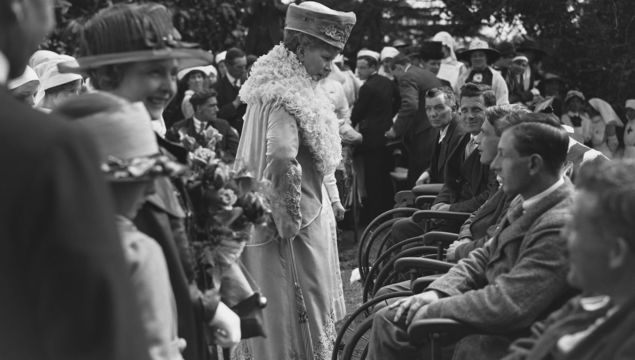
Britain's Queen Mary visiting injured soldiers, in c 1918.Getty
During the tumultuous years of World War I, the British Royal Family underwent a significant transformation that reflected the prevailing sentiment and anti-German sentiment in Britain at the time. In an effort to align themselves with the patriotic fervor and distance themselves from their German heritage, the family renounced their German names and titles, adopting the name Windsor.
The decision by the British Royal family to renounce their German names during WWI marked a pivotal moment in the history of the British monarchy and represented their dedication to the nation they served.
The house of Saxe-Coburg-Gotha
The roots of the British Royal Family's German heritage can be traced back to the marriage of Queen Victoria, who reigned from 1837 to 1901, to Prince Albert of Saxe-Coburg and Gotha. As a result of this union, their children and subsequent generations inherited the House of Saxe-Coburg-Gotha name. The German connection had become an accepted part of the royal identity in Britain, but the outbreak of World War I in 1914 challenged the perception of their German heritage.
World War I and anti-German sentiment
The eruption of World War I saw Britain and Germany locked in a bitter conflict. Anti-German sentiment surged across Britain as the war progressed, fueled by propaganda, the horrors of war, and the sinking of the RMS Lusitania in 1915, which resulted in the loss of many British lives. The German connection of the British Royal Family became a subject of scrutiny, and there was a growing belief that it could undermine the monarchy's legitimacy and loyalty to Britain.
Renunciation and adoption of the Windsor name
In response to the mounting pressure and to demonstrate their allegiance to Britain, King George V, who ascended the throne in 1910, made the momentous decision to renounce the German-sounding House of Saxe-Coburg-Gotha name in favor of a more British identity. On July 17, 1917, a royal proclamation declared that the family's name would be changed to the House of Windsor.
The adoption of the Windsor name was inspired by Windsor Castle, a cherished residence of the monarchy. It was seen as a symbol of British heritage and monarchy, representing strength, tradition, and continuity. By embracing this name, the Royal Family sought to sever their perceived German ties and reinforce their commitment to the British people.
Impact and legacy
The decision to adopt the Windsor name had a profound impact on the perception of the British monarchy, both domestically and internationally. It helped to quell the rising anti-German sentiment and reassured the British public of the monarchy's allegiance to the nation during a time of immense turmoil. The name change also played a vital role in rebranding the monarchy, contributing to its modernization and adaptation to changing times.
In the years following World War I, the British Royal Family continued to embrace their new identity as the House of Windsor. The dynasty maintained the Windsor name through various significant events, including the abdication crisis of King Edward VIII in 1936 and the subsequent reigns of King George VI and Queen Elizabeth II.
The decision of the British Royal Family to renounce their German names and titles during World War I marked a defining moment in the history of the monarchy. It reflected their desire to align with the British people and disassociate themselves from their German heritage. The adoption of the Windsor name was an important symbol of their loyalty and commitment to Britain, fostering a renewed sense of national pride during a challenging period. The House of Windsor has since become synonymous with the British monarchy and continues to represent the nation's rich history, traditions, and resilience.





Comments